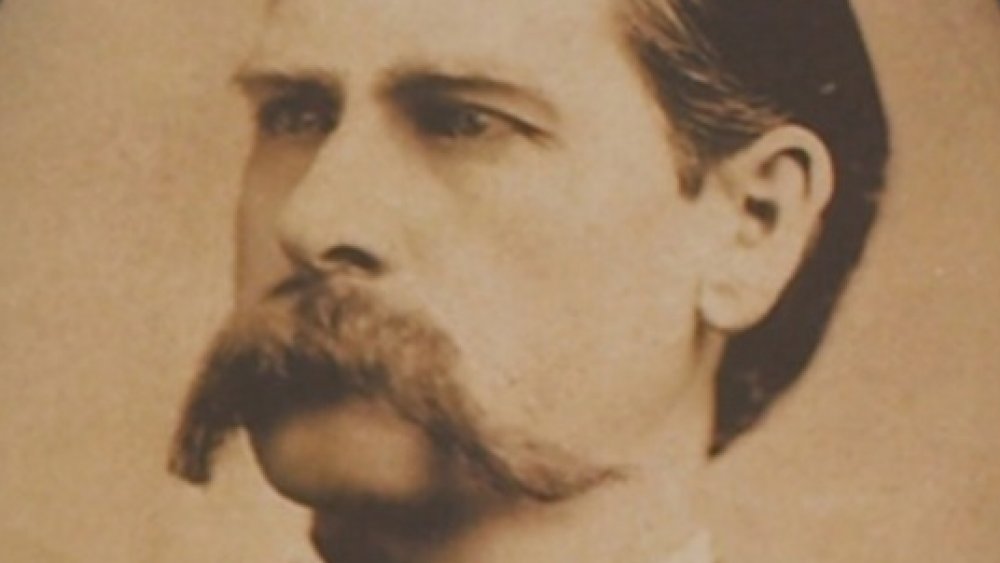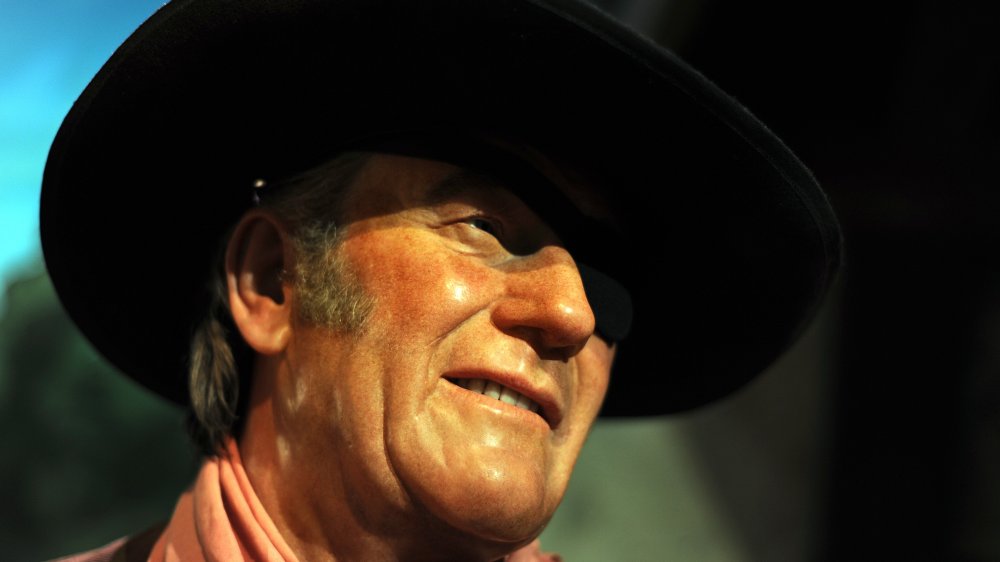The Truth About Wyatt Earp's Role In The Movie Industry
It's easy to picture the Old West as an age of John Wayne-ian true grit, when dust storms, dustups, and dust-biting gunslingers ruled the day. And at the end of the day, when all the dust settled, and all the ill-fated pistoleers tasted grainy oblivion, standing tall would be the legendary Wyatt Earp armed with his almost muscular mustache and his mythic (probably nonexistent) Buntline Special. A lawman, accused horse thief, and so-called "Fighting Pimp," Earp practically had Hollywood scripts coursing through his veins.
Earp crossed paths with some of the most fabled figures of the Wild West, including his his tubercular buddy, Doc Holliday and the ferocious Johnny Ringo. Earp even seemed to be protected by historical plot armor. According to Arizona state historian Marshall Trimble, Earp emerged from the legendary Gunfight at the O.K. Corral – described by How Stuff Works as the "gunfight of all gunfights" — "without a scratch. Just like he does in the movies."
Not only was he the stuff of movies, but he shaped the stuff that occurred in movies as a Hollywood consultant.
Wyatt Earp: how the Western was won
As recounted in A Wyatt Earp Anthology, Wyatt Earp spent the final years of his life living in California, where he wore several hats. He worked as a miner and possibly a bounty hunter, and helped make movie magic happen in Los Angeles. Between 1910 and 1928, he and his wife, Josephine (a.k.a. Sadie), worked at the Happy Days Mine in the winter and lived in Oakland and Los Angeles during the summer. Along the way, Wyatt befriended Western director John Ford and two of the silent film era's brightest stars: William Hart, and Tom Mix.
Earp formed a particularly close bond with Hart, whom he hoped would help him make a biopic. Earp even appeared in the 1923 film Wild Bill Hickok, which Hart dedicated to Earp's recently deceased friend, Bat Masterson, and for which Earp also served as a technical consultant. According to legend, a young John Wayne — then known as Marion Morrison — got to know Earp personally and modeled his acting style after Earp's mannerisms. However, American Cowboy calls bull on that story, asserting that Wayne learned about Earp through director John Ford, forging the iconic acting style of the biggest Western actor ever to lasso the silver screen.

